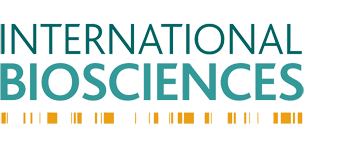The Accuracy of Cancer Cell Lines Re-defined

For several years now, cancer research has relied heavily on the use of cancer cell lines in the study of cancer genetics and its therapy. Cancer cell lines are laboratory propagated cells grown on a petri dish which are initially harvested from a primary in situ tumor. These cell lines are studied extensively to determine mutation in the tumor genesis, to identify tumor markers for diagnostic purposes, and to determine the ideal cure for the particular tumor. It is therefore imperative that these cell lines must accurately depict the exact genomic picture of the primary cancer in order for these type of oncologic studies to be fruitful.
Cancer line research
Current cancer cell line researches in the Cancer Genome Atlas in Bethesda, Maryland have demonstrated cell line harvested from the primary tumor to have some distinct differences in mutation sequences compared from the mother tumor source. Cancer researchers have postulated that such mutations are brought about by the stress of the artificial laboratory environment to which the cell lines are exposed after grafting. Other experiments on xenografts (cell implantation to another animal group) have shown inconsistent results on cell lines. The classic example for this is the use of the high grade astrocytoma or glioma cancer cells of the brain that normally exhibits an infiltrative behavior in human subjects. The xenograft cell line using a live mouse brain has been observed to develop a round and distinct tumor capsule (“bowling ball” appearance which is non-infiltrating as compared to the mother cancer source. These disparity in the cell line genetic sequence have invited criticisms from primary tumor sequencing advocates that the practice of sequencing cancer cell lines is otherwise inaccurate or futile in a sense.
As cultured cells grow and divide, they use up nutrients and eventually, cells will multiply to a point that they run out of space in the culture vessel.
Despite its drawback on the precision of cancer cell lines genomic sequence, oncologic researchers do concur that cell line genomic researches are practically faster and cheaper compared to the primary tumor studies. The primary tumor sequence may contain several sets of genomic sequences as seen with solid tumors especially at the region or starting point of mutation. In the same way solid tumors or diffuse tumors like myeloid leukemia, most cells will possess a mix type of cellularity having both the normal host genome and the abnormal cancer cell genomic sequence. This argument makes cell line cultures for oncologic study convenient and practical in these cases. However, studies from the Dana-Farber Cancer Institute in Boston, Massachusetts have demonstrated that cancer cell lines will exhibit a similar mutation in terms of chromosomal arm (short or long arm) deletions comparable to the mother tumor source.
False cancer lines
False cancer lines have misled and hindered thorough and conclusive research with cancer cells and laboratory cultures of cancer cells. One cannot talk about false cancer lines without mentioning HeLa, a cancer cell culture which is known as the oldest known cancer line. Prior to HeLa, culture cells in the laboratory died within a relatively short time frame but the HeLa cell line lived for far longer, reproducing and multiplying. The name HeLa is actually derived from the first two syllables of the name and surname of the patient, Henrietta Lacks, who suffered from a form of cervical cancer of which she eventually died. HeLa cells have since then been used in countless laboratories and scientists all over the world requested samples of these cells. However, the cells turned out to be laboratory weeds, contaminating other cultures and hindering research rather than helping it progress. False cell lines have since been highlighted in a lot of literature and recommendations have included a more through screening of cultured cells and cell lines including using techniques such as STR (short tandem repeat analysis) – a tecnique used in DNA testing to establish Y chromosome lineage, Karyotyping and HLA analysis as well as others. Scientists have not realized the importance of testing cell lines for contamination as well as infection.
In oncologic research practice, the study of cancer cell lines grown inside a laboratory may still prove to be useful in short term course studies like those that involves the cure and the chemotherapeutic eradication of cancer cells. However, recent trends in cancer research have re-defined its bounds in studying the primary tumors for gene sequencing and tumor marker identifications. In the very slow pace of tumor sequencing and genomic identifications, it is more prudent to focus on the primordial source of the tumor rather than dealing with its myriads of mutation sequences to keep up with most helpful cancer therapies for mankind at the soonest possible time.
References
Masters, J. (2012). Cell-line authentication: End the scandal of false cell lines. Nature, 492(7428), pp.186–186.
Masters, J. (2002). False cell lines. Carcinogenesis, [online] 23(2), pp.371-371. Available at: http://dx.doi.org/10.1093/carcin/23.2.371 [Accessed 29 Oct. 2013].
Burdall, S., Hanby, A., Lansdown, M. and Speirs, V. (2014). Breast cancer cell lines: friend or foe?. [online] http://www.biomedcentral.com/. Available at: http://www.biomedcentral.com/content/pdf/bcr577.pdf [Accessed 29 Oct. 2013].
Wikipedia, (2014). HeLa. [online] Available at: http://en.wikipedia.org/wiki/HeLa [Accessed 3 Nov. 2014].


